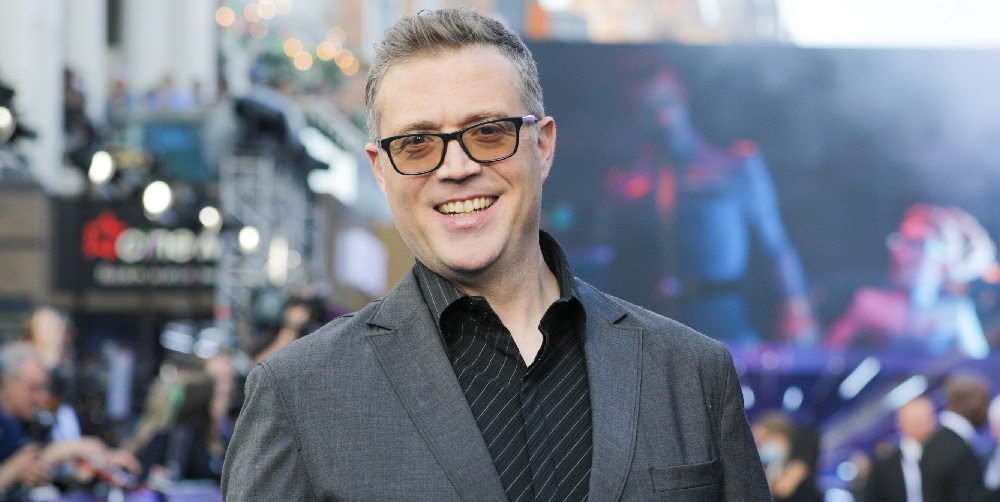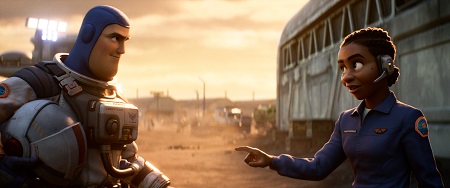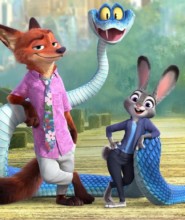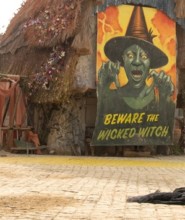
“Lightyear” – Interview with Angus MacLane
by Sara Michelle Fetters - June 24th, 2022 - Interviews
To Infinity and Beyond
Portland native Angus MacLane on taking command of Pixar’s Lightyear
Pixar’s Lightyear blasted off into theaters last weekend, and for veteran animator and Portland native Angus MacLane making it was like composing a visually dazzling love letter to the genre films of his youth. Getting his start with the company working on 1998’s A Bug’s Life and after having co-directed 2016’s Finding Dory with studio legend Andrew Stanton, helming this ambitious what-if science fiction adventure was a dream come true.
I briefly sat down with MacLane to chat about his film, the challenges it presented, and the aspects about its production he’s especially proud of. Here are the edited transcripts of our 10-minute conversation:
Sara Michelle Fetters: You’ve probably been asked this 75 billion times and are tired of the question, so we’ll get it out of the way: Why this story? What was it that made you want to tell the tale of Buzz Lightyear the person, instead of the toy?
Angus MacLane: I wanted to make a movie that felt like the ones I loved when I was a kid. The sci-fi genre pictures that I grew up with really inspired me to be a filmmaker, and I wanted to do the same for our new generation. I’d been connected to Buzz since I started at Pixar in 1997, but I’d always felt like his backstory, although it was an amalgam of the genre films that I had grown up with, that there was a potential for an interesting sci-fi universe to be explored.
A Buzz story would allow me to do a sci-fi movie in the tone that I was interested in. It would be different than a Toy Story. It would be more of a straightforward, hard sci-fi movie punctuated with character and comedy.
SMF: For audiences, I do feel that it takes them a second to realize this isn’t a Toy Story movie. It’s not even Buzz Lightyear of Star Command. Lightyear is its own thing, made in the style of those 1990s action films. Was that a difficult concept to convince Pixar to go with?
AM: It took some convincing to bring people over to understand what I was doing. But Pixar was always supportive of it. It always had a tough road as far as making. It’s an unusual concept, to be sure, but it has the benefit of being a very personal story and from a very specific point of view. I think you can’t get very far with random generic-ness. I think, when you’re going to make a movie like this, it needs to have something consistent about it. That was always my goal. The movie we ended up with is the movie that I wanted to make, which is really nice.
SMF: It is a balancing act. You’re making a movie in that style of those films that you loved back in the ’90s, but it still has to play and appease modern audiences, especially kids. What was the balance like to make sure that you were hitting all of those buttons? Was it even something that you were thinking about?
AM: I didn’t think much about the kids at all, honestly. I just sort of thought, “What would I like?” Then you test screen to make sure that kids are getting it. You make adjustments as needed.
It’s hard to chase the concept of “modern audiences” in the sense that when you start the movie, by the time you finish it, the audience will have aged 20 years. [laughs] All that time dilatation stuff is based around film production/ It takes so long to make these movies. When you finish, you’re like, everything’s changed. It’s just this thing that you’re always battling. All you have is this mission, this mythical mission that never really ends, and so you need to realize that the most important thing is spending time with people.
SMF: Exactly. Buzz’s journey is that he’s so centered on saving everyone, he doesn’t get to live a life. His discovery at the end of what living life actually means and encompasses, I think, is very powerful. What is the message that you’re hoping that audiences take away from that journey?
AM: I think the smart thing to say, or the poignant thing to say, would be that I hope people realize not to focus too much on the past or worry too much about the future, but to live in the now as that’s fairly aspirational. But honestly? The thing I want audiences to take away from the movie is, “That was awesome!”
I think that was the feeling that I got from the movies of my youth. I hate to use the term “thrill ride,” but there’s a sense of momentum here. Star Wars is interesting because people often focus on the details. But the narrative momentum of the original Star Wars is incredible.
I’m not trying to compare the movie to Star Wars, but there’s something about that film that is really aspirational as a filmmaker. It’s interesting to see how that momentum generates this kind of feeling. When you finish Star Wars you’re like, wow! I want to see that again. That’s fascinating to me.
SMF: Talk about the visuals. This is the first Pixar film animated to be in IMAX, and some of those visuals are stunning.
AM: Thank you! The movie is exactly the way what I thought it was going to look in the beginning, so it’s hard for me to chart when it became clear to everyone else. It’s like you’re working on a painting that has been covered in soot. I know what it looks like, but not everyone can see it, and so you’re going to kind of remove it carefully. Then it reveals itself to be this fresco.
The look of it was in trying to chase a cinematic, warm look that CG doesn’t do very well. What happens in CG is everyone has to make everything so they can see their work. They want to see it. Often things are over lit and you have too much information.
To me, the movies I always gravitated towards were things where you couldn’t see everything and your eye was really directed. That’s something that we worked really hard on, to make it feel like your eye was directed in the right way and limiting information so the audience leans in and gets into it.
SMF: I would be remiss if I do not bring up Commander Hawthorne’s journey in the film. How important was it for you to have her story in there and have it be part of Buzz’s tale but not a focal point of it?
AM: That’s the challenge. For me, representation is so important, but if it’s not substantial enough and it feels like an afterthought, then it reads like tokenism. It was always a goal to have the character be substantial.
Alicia’s queerness, it did a couple of really nice things for us. One, the representation is something that was personal to me and I believe in. But additionally, I did not want to have Buzz have a romantic relationship. I noticed that whenever we veered towards that or implied that, it felt weird. I think that Buzz is better when he’s not doing things for romance. It didn’t quite feel right.
By making Alicia explicitly queer and having that be something that Buzz was aware of, and it was just normal, it solidified their relationship. Additionally, showing her life – and I wish it wasn’t as revolutionary as it is – it was a way to show something that he was missing from his life. It solidified what their relationship was so. This was good narratively and socially, I think.
SMF: At the end of the day, what do you hope audiences take away from the film? What do you want them talking about?
AM: I just want them to have a good time. It’s great to read reactions from audiences. It’s pretty much now like, “I’ve seen it twice. That was awesome.” People get into it.
– Interview reprinted courtesy of the SGN in Seattle






